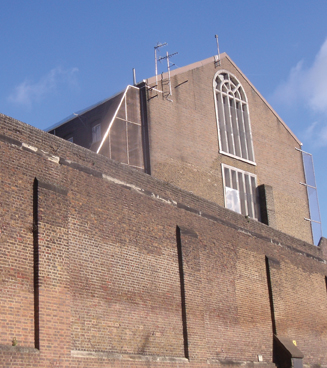More on prisons in the February 2019 print issue of Professional Security magazine; here Mark Rowe picks up an interview in today’s Guardian.
The Prisons Minister at the Ministry of Justice, Rory Stewart, argues for ‘airport-style’ screening for visitors to prisons. He said: “We have to move to airport-style security, where every single prison officer, every member of staff goes through an airport-style security check every day. Anyone, in fact, who enters a prison, including me.” As an acceptance that the risk lies with corrupted prison officers bringing in contraband, he also advocates a ‘single transparent bag, going through an x-ray scanner is all they [staff] should be able to take in’.
That’s commonplace again if you walk through airport security to go airside; or if a user of the British Library, or National Archives at Kew. As Rory Stewart acknowledges, that would require physical changes to the prison buildings, for staff lockers to be outside the gates. Again, other places bringing in more security checks at entrances have had to find physical room to do it. Consider the British Museum’s white marquees at each entrance in Bloomsbury, and more recently the National Gallery has made its two entrances from Trafalgar Square one entrance (for the Sainsbury’s Gallery) and one exit (into the centre of Trafalgar Square) and at the entrance fitted two airport-style x-ray screening arches, before a space for security officers to search bags.
All that implies that once the perimeter is secured, inside can be improved – the violence by prisoners against other prisoners, and staff, and self-harm and suicide; and, that denying contraband such as drugs to inmates will also lead to less violence. Prisoners in the era of BBC TV’s Porridge had their contraband and violence; order arguably depended and still depends on prison officer numbers and facilities.
After an unannounced inspection in August and September 2018 of Bedford Prison, yesterday Peter Clarke, HM Chief Inspector of Prisons, spoke of ‘seemingly inexorable decline’ at the jail in four inspections since 2009. Peter Clarke said that he found no credible plans by the prison or HM Prison and Probation Service (HMPPS) to address Bedford’s “dangerous shortcomings”, of violence, squalor and ‘tenuous’ control, and ‘could not be confident in the prison’s capacity for change and improvement, even when under special measures’.
After inspection in 2018 that Mr Clarke took the rare step (although getting less rare; it was last year invoked for a G4S-run private prison in Birmingham) of invoking the ‘Urgent Notification’ protocol, requiring the Secretary of State for Justice to respond publicly with an improvement action plan. HMPPS had made Bedford – a 420-inmate, category B local and resettlement prison – subject to a Performance Improvement Plan in September 2016, but by May 2018 it was judged that there had been insufficient progress and the prison was placed in what HMPPS terms ‘special measures’.
As for the detail at Bedford, the inspection report spoke of ‘lack of order and control on some wings’ as a ‘major concern’; ‘assaults on staff had risen sharply’. A ‘prisoner violence reduction scheme was mainly ineffective’; many prisoners told inspectors they felt unsafe; prisoners behaving badly were not sanctioned. Drugs were easily available. One in five said that they had developed a drug problem while in Bedford. One officer said: “If it’s just cannabis, it’s a good day.”
Bedford is not one of the ten prisons named as most challenging that recently the Ministry of Justice said would get millions for extra security for drug detection. Bedford thus lacked ‘electronic drug detection equipment in place to scan mail’ in case of impregnated drugs. The inspectors pointed to how a lack of spending on prisons generally can cause poor security, which can lead to a poorer quality of life in prisons, which adds to grievances and so on in a spiral. “A perfectly good artificial grass football pitch was not being fully used because it lacked
physical protection (netting) to prevent prisoners from retrieving drugs thrown over the prison wall.”
Tech is not the answer to everything, however, and in any case at Bedford staff asked for more CCTV cameras and effective window cages but did not get them. Tech does not do anything to address what the inspectors at Bedford described as inexperienced staff, out of their depth as a group: “Prisoners routinely and blatantly disregarded rules and appropriate standards of behaviour, without challenge.” As the inspectors added, that led to ‘unacceptable risks’, such as baton use by officers ‘much higher than we normally see’, according to inspectors (who regularly ‘smelt cannabis and other substances being burnt throughout the prison’). Quite apart from prisoners being disorderly and getting their own way, for example when staff tried to do a cell search, the inspectors pointed (as at other prisons) to ‘organised gang activity, drug supply and associated debt’. And as Frances Crook, Chief Executive of the charity the Howard League for Penal Reform, commented, prisons like Bedford ‘infect local communities’.
And can we put airport-style screening into every town and street?
Picture by Mark Rowe; Pentonville Prison, north London.










